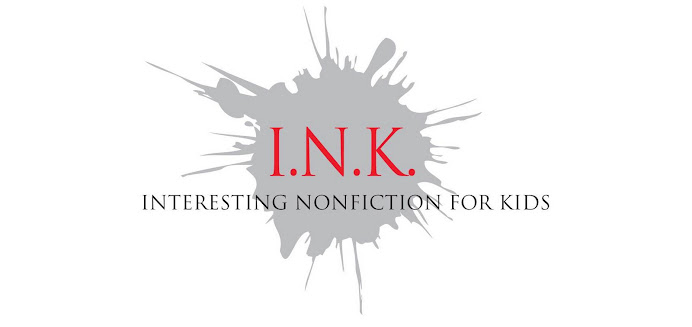When I think of life-changing nonfiction books, I think of my uncle Tom, quoted here from when I interviewed him about his childhood:
“Right after Pearl Harbor, the government decided they needed all the pots and pans, especially aluminum, that you could find. So I took the wagon around the neighborhood collecting aluminum pots for the war effort. Then, the big change in my life came when the government decided they needed books for all of the young men being drafted into the service and in the army camps training. Somebody decided they should have books they could read. So, once again I took my little wagon around the neighborhood collecting books. So, of course, I looked at all the books before I passed them in. So, there was a chemistry book. Oh boy! (Tom says this with a rather delicious tone.) An eleven or twelve year old boy with a chemistry book is about the most dangerous thing you can get . . . !”
The follow up anecdotes to his finding that book are hilarious and rather, um, explosive. As he says, “It was a different, less safety-conscious time.” Fortunately he survived his mischief and ultimately studied engineering, worked in electrical engineering/invention and later founded Delta Education, a science kit company, in his basement.
Not to be outdone, my Mom founded a small company in our basement when I was growing up: a company entirely dedicated to book correlated with SCIS, ESS, and other science curricula. We’d get calls from educators all over the country and we’d pull books from the shelves.
As I pulled, packed, and made catalog cards for each book, I occasionally read them. So I was reading picture books and middle grade nonfiction way into my tweens/teens. I knew the name Vicki Cobb, of course. (Science Experiments You Can Eat.) I loved the Let’s Read and Find Out series. (Someday I’d love to write one just so I could come full circle on that.) I knew Aliki’s books, such as Green Grass, White Milk. My favorite, though, was Water for Dinosaurs and You, by Roma Gans. That book was one that showed me the big connections you can make, perhaps planting seeds for my big idea books such as Stars Beneath Your Bed: the Surprising Story of Dust.
A lot of the important nonfiction of my childhood, though, was adult nonfiction. My first chemistry text was our cookbook, Joy of Cooking. My mom had a field guide to mountain wildflowers so I learned about them as we wandered the mountains near Banner Elk, NC. My grandmother and mother each had a copy of Peterson’s Field Guide to Birds of North America. Although we had Golden Guides, which were fun to flip through, I was pretty soon into the adult field guides. To this day I am obsessed with field guides and 90% of my nonfiction purchases are field guides. (Years ago I even got to meet Roger Tory Peterson who authored that guide.)
 Last year, this generation’s Roger Tory Peterson, author Kenn Kaufman, asked my husband Jeff Sayre to coauthor a field guide to the nature of the midwest. (Kenn and his wife Kim Kaufman are writing a regional series for Houghton Mifflin.) Jeff is a native plant expert. So we've been traveling all over the Midwest studying and photographing plants, insects, and habitats for the guide. The experiences are spinning off into my own books.
Last year, this generation’s Roger Tory Peterson, author Kenn Kaufman, asked my husband Jeff Sayre to coauthor a field guide to the nature of the midwest. (Kenn and his wife Kim Kaufman are writing a regional series for Houghton Mifflin.) Jeff is a native plant expert. So we've been traveling all over the Midwest studying and photographing plants, insects, and habitats for the guide. The experiences are spinning off into my own books.
So, what more recent books could I recommend in the spirit of these books?
I think every school library and family library needs some adult field guides to feed the most curious kids. The Kaufman Guides, of course. My favorite is the
Kaufman Field Guide to Insects of North America.
His bird books, too. Kenn paid to have his bird book translated into Spanish to make bird knowledge available to more people. I’d like to see these books in every community. So I think that book should be widely available as well:
Guia de Campo a las Aves Norteamérica by Kenn Kaufman
Among children’s books, I think some that would spark young minds would be:
The Beetle Book by Steve Jenkins.
Here’s a great curriculum tie-in post I found for that beetle book:
I love wide-ranging thought books, such as A Drink of Water by Barbara Kerley.
Then there’s the recent Citizen Scientists by Loree Griffin Burns.
Anything in the Scientists in the Field Series would be a great inspiration to kids.
The Frog Scientist by Pamela S. Turner.
The Tarantula Scientist by Sy Montgomery, photographed by Nic Bishop. (Love just about anything that duo creates.)
Kakapo Rescue: Saving the World's Strangest Parrot by Sy Montgomery/Nic Bishop.
Nic Bishop also writes some of his own book texts to go with his gorgeous photos. Like Steve Jenkins, he is a person with a dedicated interest in science.
I’ll stop here. There are so many great scientific nonfiction books for kids published these days. It’s a feast. I can’t imagine where my mind would roam if I’d grown up with them. For the plant- and kitchen-inclined mind, perhaps one could throw in my just released book, Let’s Go Nuts! Seeds We Eat. It'd be tasty for the youngest to think of beans, nuts, spices, and grains they eat as living seeds. Celebrating diversity in plants, animals, and nonfiction books is so much fun. Thanks, INK community!





